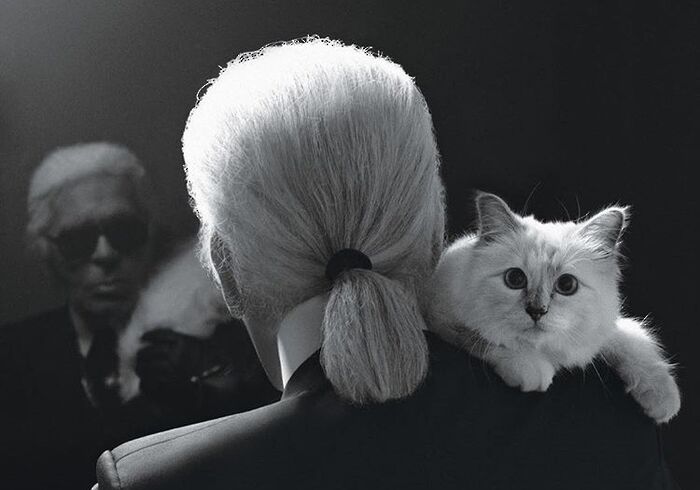Remembering Pierre Cardin
Varsity‘s Fashion Editors pay tribute to the much-beloved French-Italian fashion designer
Pierre Cardin has died at the age of 98, and with him goes the wealth of creativity and innovation which he showcased throughout his life and career. What he leaves behind is a lifetime of international influence on the fashion industry. Cardin co-designed the 1960s; his space-age inspiration, clean shapes and lines will forever be synonymous with the decade. He achieved the greatest feat, for his designs to outgrow their designer and epitomise their time. However, at no point did he rest on his success. As much as his designs may now be firmly attached to the ’60s, Cardin only looked forward. His imagination meant he was always ahead of the curve, and now looking back we can see that he was a guiding force of fashion, even until the very end of his seven decade long career.
Born in northern Italy on July 2nd 1922 to wealthy landowners, Cardin and his family moved to France when he was just two. It was here that he developed an interest in dressmaking, getting his first job in the industry (as a clothier’s apprentice) at only 14. After several years of designing women’s suits, Cardin moved to fashion capital Paris in 1945, bringing him opportunities at Paquin and Dior, until the founding of his own fashion house in 1950, at age 28.
“Cardin co-designed the 1960s; his space-age inspiration, clean shapes and lines will forever be synonymous with the decade”
The impact of the Pierre Cardin label has been immeasurable. Not only is Cardin credited with introducing of some of the staple pieces of the 20th century, such as the bubble dress and the mini and maxi skirt, but also with normalising the now commonplace practices of ready-to-wear lines and branded garments.
By the 1970s, Cardin was a household name, setting the “mod chic” trend through an eclectic combination of shapes and forms – even designing spacesuits for NASA and the national costume of the Philippines. At present, the Cardin brand has come to encompass not simply fashion but an entire lifestyle, offering furniture, perfumes, and cosmetics, as well as his signature promise of all-embracing innovation.
Though A-listers were supposedly not his target market – “My aim was the street, that my name and my creations be on the street...Celebrities, princesses were not my cup of tea,” he once claimed – Cardin still managed to dress the likes of Elizabeth Taylor, Brigitte Bardot and Jackie Kennedy, and more recently found fans in stars like Naomi Campbell and Lady Gaga. Eva Perón was allegedly one of the first to don his bubble dress, while he’ll also be long remembered for popularising the men’s suit with a collarless jacket, first worn by The Beatles in 1963. He inspired designers from Jacquemus to Jean Paul Gaultier, who worked as his assistant in the ’70s and who last year said of Cardin: “Pierre Cardin is a marvel. I find it normal to pay homage to a designer who has opened so many doors for all of us.”
“the Cardin brand has come to encompass not simply fashion but an entire lifestyle”
His death led many in the fashion industry to pay tribute to the late designer and celebrate his revolutionary impact. Gaultier shared a photo of the two of them at Paris Fashion Week in 2018, writing: “Couturier, designer, ambassador of France, academician, patron, throughout his whole life, Pierre Cardin has done wonderful work. Thank you Monsieur Cardin for having opened the doors of fashion to me and for having made my dream possible.”
Maria Grazia Chirui, Creative Director of Dior, where Cardin worked as a tailor in the ’40s, also paid her condolences: “I am very saddened by the passing of the creative genius, Monsieur Pierre Cardin. I had the honor of meeting him after my first show for Dior; he welcomed me in the House of which he will forever be a part of.” Kim Jones, Artistic Director of Dior Men’s, added in a statement: “To me, Pierre Cardin really looked to the future and formed the language for the modern landscape of fashion.”
Though the French couturier himself may no longer be with us, he leaves behind a far-reaching legacy. The designs and styles he pioneered will succeed him – precisely what he desired, famously declaring: “The clothes I prefer are those I have created for a life that doesn’t exist yet - the world of tomorrow.”
 Comment / Plastic pubs: the problem with Cambridge alehouses 5 January 2026
Comment / Plastic pubs: the problem with Cambridge alehouses 5 January 2026 News / New movement ‘Cambridge is Chopped’ launched to fight against hate crime7 January 2026
News / New movement ‘Cambridge is Chopped’ launched to fight against hate crime7 January 2026 News / Uni-linked firms rank among Cambridgeshire’s largest7 January 2026
News / Uni-linked firms rank among Cambridgeshire’s largest7 January 2026 News / SU stops offering student discounts8 January 2026
News / SU stops offering student discounts8 January 2026 News / Cambridge businesses concerned infrastructure delays will hurt growth5 January 2026
News / Cambridge businesses concerned infrastructure delays will hurt growth5 January 2026









